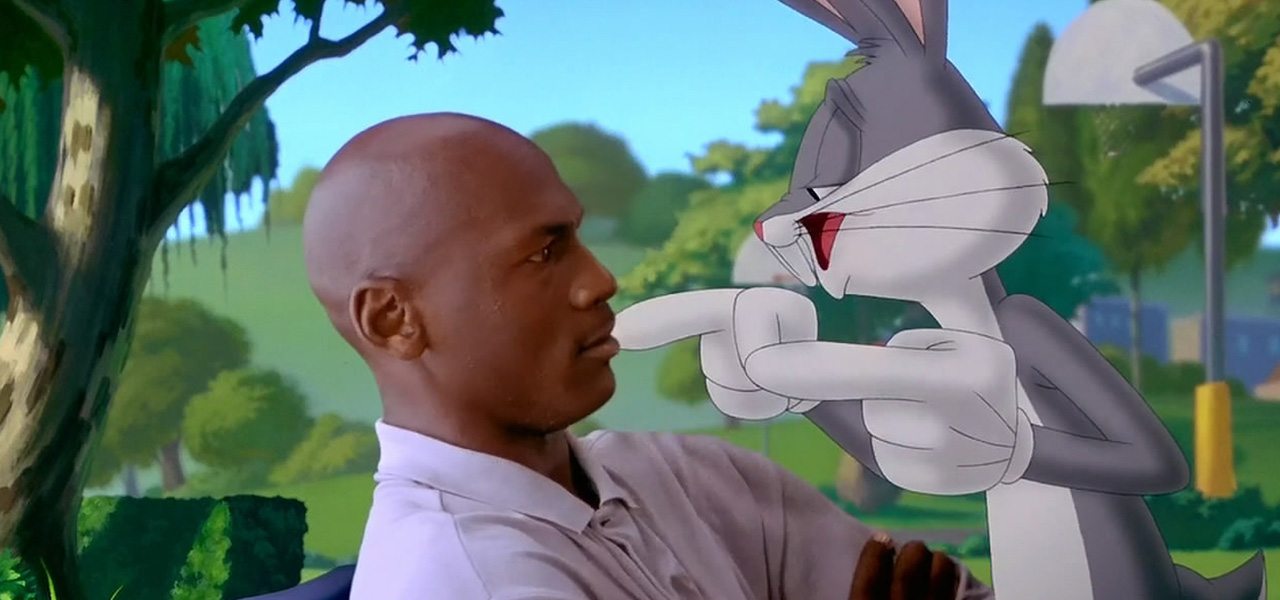
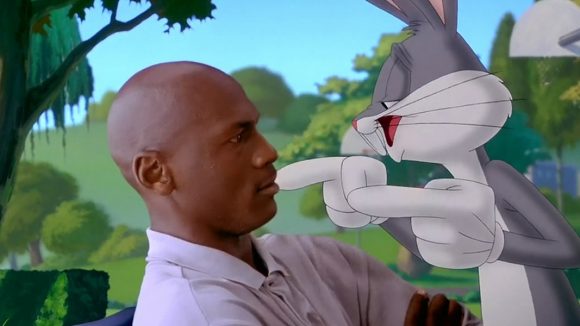
The Oral History of ‘Space Jam’: Part 1 – Launching the Movie
In November of 1996, Warner Bros. Feature Animation released Joe Pytka’s Space Jam, starring Michael Jordan and many members of the Looney Tunes. The hybrid live-action/2D animation film was a box office hit and also ushered in a new wave of movie merchandising for Warners.
But the backstory of how the film was made is equally interesting: it was produced on an incredibly ambitious schedule—mostly shepherded by producer Ivan Reitman—amid a major digital shift in how 2D animation and vfx were being made throughout the industry.
For Space Jam’s 20 year anniversary (the film was released into U.S. theaters on November 15, 1996), Cartoon Brew has spoken to several artists who worked on the film, re-tracing everything from the frenetic schedule, to the worldwide animation effort, and the new technology required to film live action on greenscreen, build virtual sets, and composite 2D animated characters.
Part 1 of this Space Jam oral history outlines how the film almost never get off the ground, the influence of Who Framed Roger Rabbit, the evolution of character designs, and what was involved in shooting the greenscreen basketball scenes. Parts 2 and 3 will be published exclusively on Cartoon Brew on Wednesday and Thursday.
Read PART II and PART III.
Space Jam’s Slightly Shaky Beginnings
Tony Cervone (animation director): There were different factions of animation within Warner Bros.. and one of them was called Classic Animation, which was a very small unit which mostly did commercials and special projects. They had made the ‘Hare Jordan’ commercial—the original Bugs Bunny/Michael Jordan commercial, which was the genesis of the idea of putting these two guys together. For a very brief time, Space Jam was part of this Classic division. It was only for a week! And during that week, ten of us were snapped up into the movie and most of us rode it through all the way to the end. I was there on day one and there when we turned the lights off and walked away.

Bruce W. Smith (animation director): Jerry Rees was one of the animation producers in the beginning and he wanted me to supervise animation at the time. We had maybe two or three different studios that were going to jump in and help us with the animation. They had an animation director already and then the week I got there he was fired. Eventually Joe Pykta and I had gained some rapport, and he just pulled me aside one day and said, ‘You’re gonna direct this thing.’ I saw what happened to the other guys, and I’m like, ‘You know, Joe, I’m good where I am, supervising animation, I think this is my lane, I think I’m good with this.’ And he just kinda said, ‘You’re gonna do this.’
Neil Boyle (supervising animator): I was in the U.K. and I got a call from Steven Paul Leiva, who was one of the original producers and he said, ‘Would you guys be interested in working on Space Jam?’ I didn’t even know what that title meant. But I said, ‘Sure, you know, let’s pencil it in. Maybe I can fly out to L.A. next week or in a few days time or something.’ He said, ‘No, can you kind of get on a flight now?’ And I went, ‘Well, not exactly now,’ and he said, ‘Tomorrow then, tomorrow, can you get on a flight tomorrow?’ So I said, ‘Sure.’ I thought it was going to be three days of talks about this movie. And by the time we were picked up at the airport and taken to the hotel, they said, ‘Okay, to be honest we really just need you to start drawing.’ I still hadn’t read the script.

Bruce Woodside (supervising animator): My official job title at Warners had been ‘director in development’ which meant that I was heading up teams of story and concept artists on a variety of projects that would eventually be pitched to executives. I’d had experience doing this in development at Disney, and that seems to have been what got me in the door. There were three or four of us in this capacity, and it was very much a competition – whoever got an idea greenlit would become the director of the first feature produced by Warners Feature Animation to go head-to-head with Disney, post-Lion King.
There was actually a lot of excitement among the evolving team of artists, many of whom had felt constrained by the Disney formula and wanted to develop more adult, sophisticated material – still the dream. There was also the stated goal of making the studio an ‘artist-friendly’ environment, but that’s another story. I don’t know at what point I heard that Warners Classic Animation – the folks in Sherman Oaks doing TV and classic characters – were developing their own feature, but I do recall that we, with our studio based in Glendale, were specifically told we would not be working on it – no way, no how, out of the question.
And then we were. I specifically remember – though I can’t recall the exact date – being summoned into then-president Max Howard’s office and told that Space Jam was in trouble, deep serious trouble. There was a lot of really complicated animation to be done, nobody knew precisely what it was, storyboard artists were still working out gags and such, or how much there might be, and there was no time and not enough crew to do it.
At one point we heard the production team of Steve Leiva and Jerry Rees were departing, and Bruce Smith and Tony Cervone were taking up the task of animation direction under the guidance of producer Ivan Reitman. Director Joe Pytka had already delivered his piece, but most of the picture was just Jordan and guys in greenscreen suits acting in a big bright void, with the camera bouncing all over the place. The release date was set in stone, so this was going to be a mad, money-infused dash to the finish line, if it was even at all possible.
Bill Perkins (animation art director): Ultimately there were 18 studios around the world that were working on this. I had a little background department and a layout department. And the layout department was starting to draw out some keys and do some layouts. Then they were going to get sent out to the other studios for animation. We decided that five or six of the 18 studios would be doing the background paintings and instead of painting keys and sending them to overseas studios we brought in the leads to Sherman Oaks.
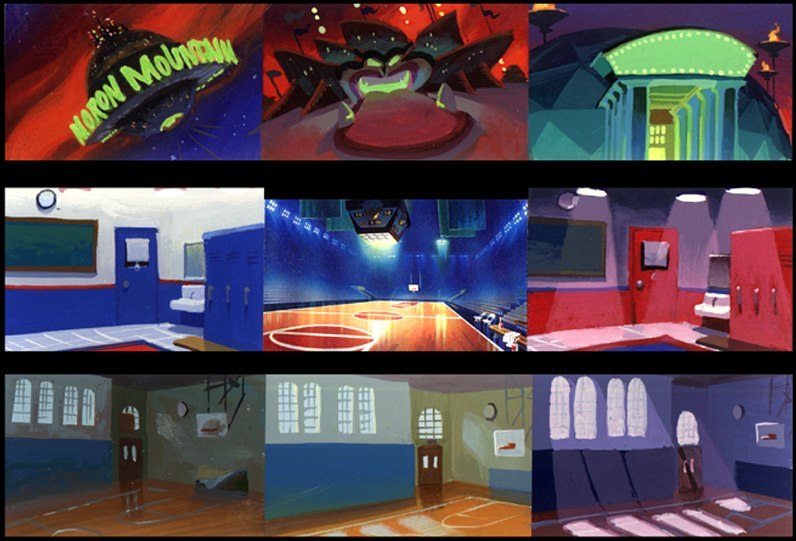
Neil Boyle: One day we got a memo sent around to all of us and it said the new title for the film is Up In The Air. And I thought, ‘Okay, Up in the Air, because Michael Jordan’s kind of flying through the air and I kind of get that, that’s not too bad.’ And then about two hours later somebody came around and hastily retracted all these memos, and it had just turned out that one of the secretaries in the meeting said, ‘Do we have a new title to put out there?’ And one of the producers said, ‘Oh man, it’s up in the air.’ And she had literally thought it’s Up in the Air and had notified everyone this was the new name of the film!
Bruce Woodside: Since most of Feature Animation’s crew was involved in revving up to do Quest For Camelot, I, having lost the development derby—or dodged a bullet, depending on your point of view—and several other fairly idle development personnel, including animation producer Ron Tippe, were being re-assigned to what appeared to be the sinking ship of Space Jam. You can imagine my enthusiasm. Like so many other animators, I adore the classic Warner Bros. characters, but I really had little hope that tying them to the massive anchor of an apparently doomed marketing scheme could actually give them a successful second life in features. But I am a ‘glass half-empty’ sort of guy in a ‘glass half-full’ sort of industry. Today, kids yawn when I tell them that I worked on Beauty and the Beast, but their eyes light up when I mention Space Jam. Go figure.
Neil Boyle: They installed us in a port-a-cabin in the Universal backlot almost as soon as I got there. I started drawing and designing and storyboarding. I had no clothes, I went out and I bought pants and socks and t-shirts so that I could stay there longer. I thought I was going to be in L.A. for three days but I didn’t come home for six or seven weeks. The crazy thing about Space Jam is that I think they had the release date but the script wasn’t quite finished – although they had the concept for it – and they had to just get going.
The port-a-cabins were situated just behind a row of bushes the other side of which was the Jaws attraction. So for the first few weeks of working on Space Jam all I could hear from my desk was the trundle of an approaching tour bus, the voice of a tour guide going, ‘Welcome to Amity Island folks!’ The peaceful fishing port where I’d hear, ‘OH MY GOD! OH MY GOD! IT’S A SHARK!’ followed by a compressed air explosion of water and the shrieks of tourists. And then we’d get another 90 seconds of peace before the next tour bus trundled by with the, ‘OH MY GOD! IT’S A SHARK!,’ the compressed air explosion, and the shrieking tourists. Imagine that for ten hours a day. It was like a bizarre Chinese water torture!
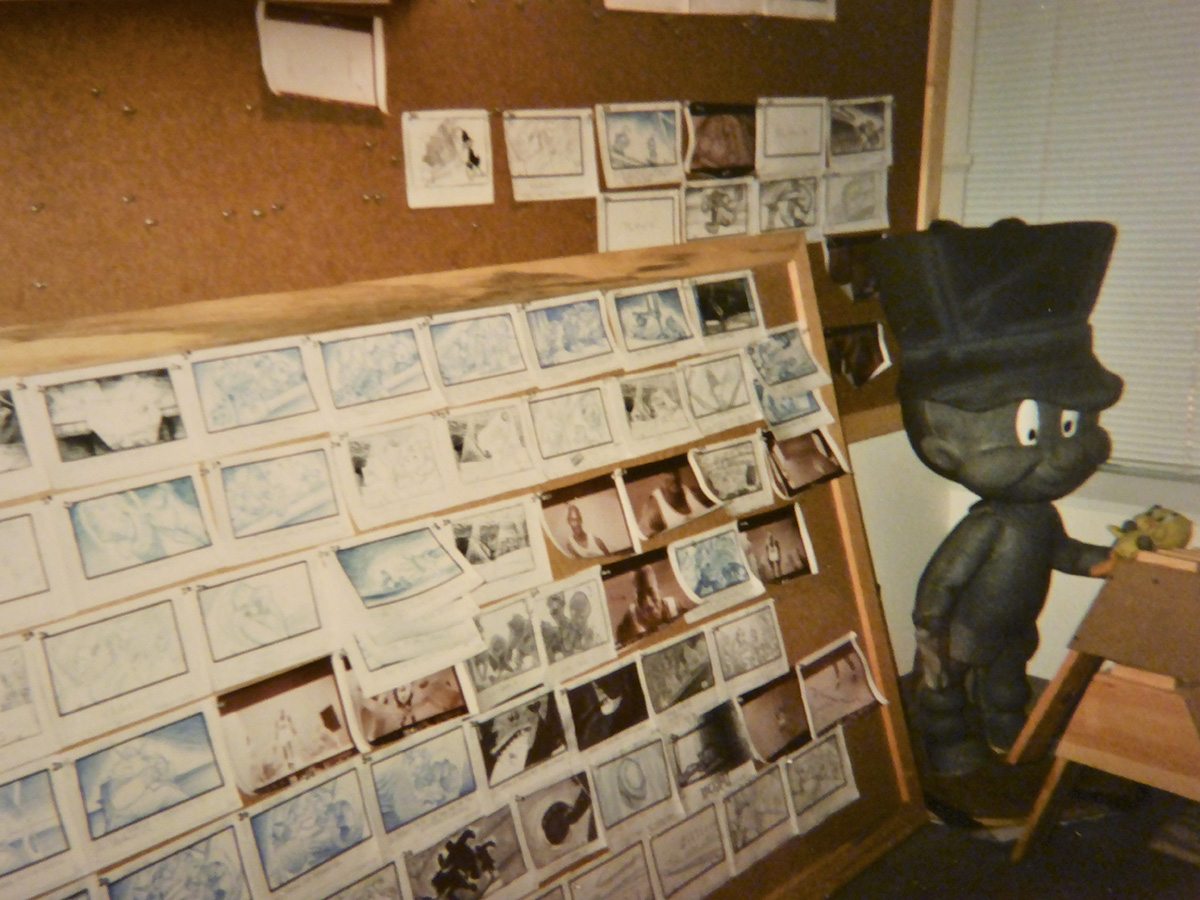
Tony Cervone: It was at the time when Warner Bros. was trying to start a feature animation group, but it wasn’t really their project. We were bouncing around. For a while we weren’t even at Warner Bros.. – we were over at Ivan’s place at Universal. It was very chaotic. Really the whole production was only 19 months. From story to storyboard, getting the movie shot and all that was the first 10 months or so.
Neil Boyle: They very quickly realized the number of people they needed was going to be huge, so they asked me whether there were any other studios in London I could recommend. And I suggested Uli Meyer because his studio was very established and a high quality studio doing this kind of work. And then Uli suggested others too.
Chuck Gammage (supervising animator): Max Howard got in touch with me in Toronto and we set up a unit in the area. Originally we were brought on to work on Quest for Camelot with Bill Kroyer who was directing at the time. They asked us to help out on Space Jam first towards the end of that production. I was fortunate to gather up a great crew including key animators Morgan Ginsberg, Daryl Graham, Shane Doyle, Steve Baker, Scotty Glynn and key C/U [clean-up] and IB [inbetween] assistants Ron Chevarie, Ed Krahn, and Paul Mota.
Hybrid Animation: Will This All Work?
Bruce W. Smith: We were producing this movie during the age where digital was still meeting analog, but also taking its place. It was difficult because a lot of the stuff we were doing hadn’t been done before.
Tony Cervone: To make a movie like that in 19 months using technology that we had never even seen before was pretty incredible. I mean, everything is shot on greenscreens now, but not then. And we had to do motion tracking. We didn’t even know what motion tracking meant. I remember the first few scenes of dailies and going, ‘What are we looking at?’ All of us were like, ‘What just happened?’
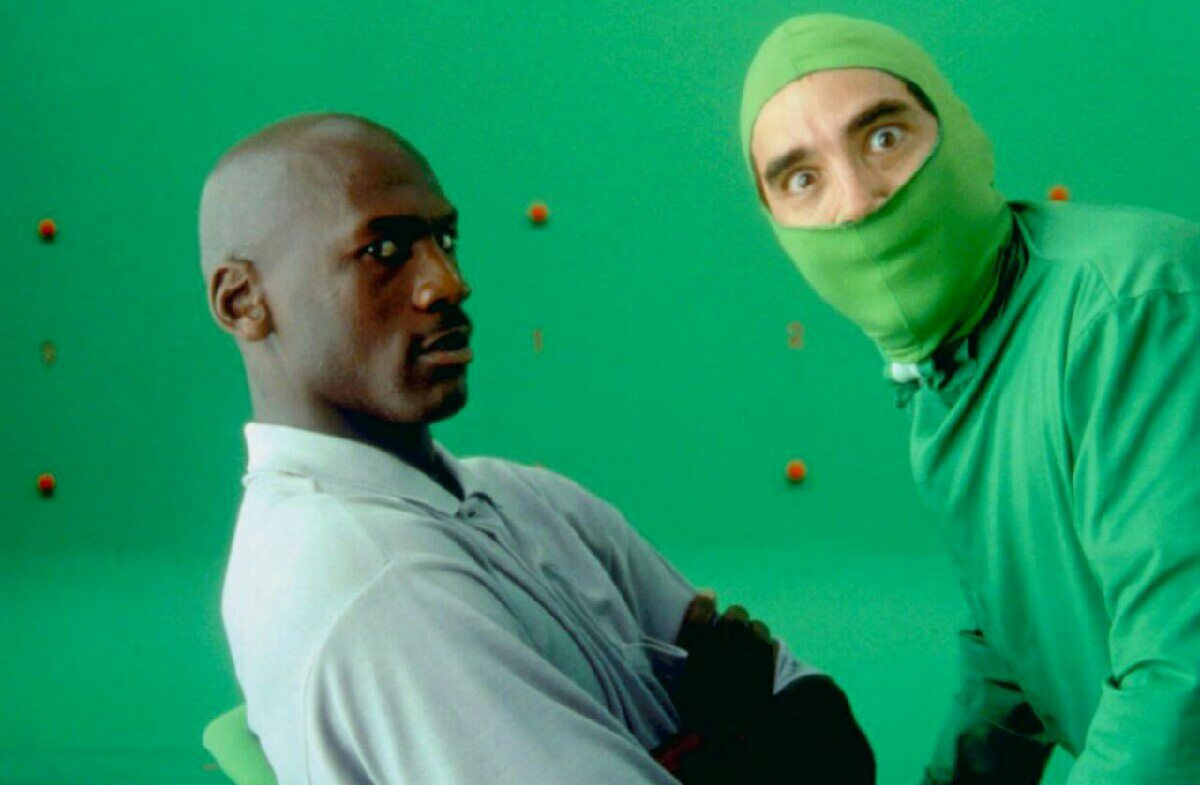
Neil Boyle (supervising animator): One thing I heard was that Ivan Reitman, when they were thinking about going ahead with this movie, had phoned up Robert Zemeckis about Who Framed Roger Rabbit and asked, ‘Do you have any advice on what we should do to make a movie like this?’ And he said, ‘Don’t do it, it nearly killed me.’ He was talking about the technical side of things, but I think it’s also very difficult to come up with the kind of script that makes it work. Against the animation the live-action can look very flat. Humans are not as bouncy and rubbery as animated characters and vice versa. So you needed a kind of Alice in Wonderland story where you fall down the rabbit hole.
Bruce W. Smith: When I was working on Who Framed Roger Rabbit, a lot of that work was just simply opticals, and we were literally taking cels and cutting them, re-using stuff, and still using the Oxberry animation camera. But Space Jam was very different in terms of the composition of shots and the layers that we had to use to achieve the depth of field in the animated world when Jordan was dropped in.
Ed Jones (visual effects supervisor): Up until then, the Looney Tunes had basically only been on the screen for six minutes at a time, and so no one knew if you were going to get tired of a ninety minute film with Looney Tunes the whole way through it.
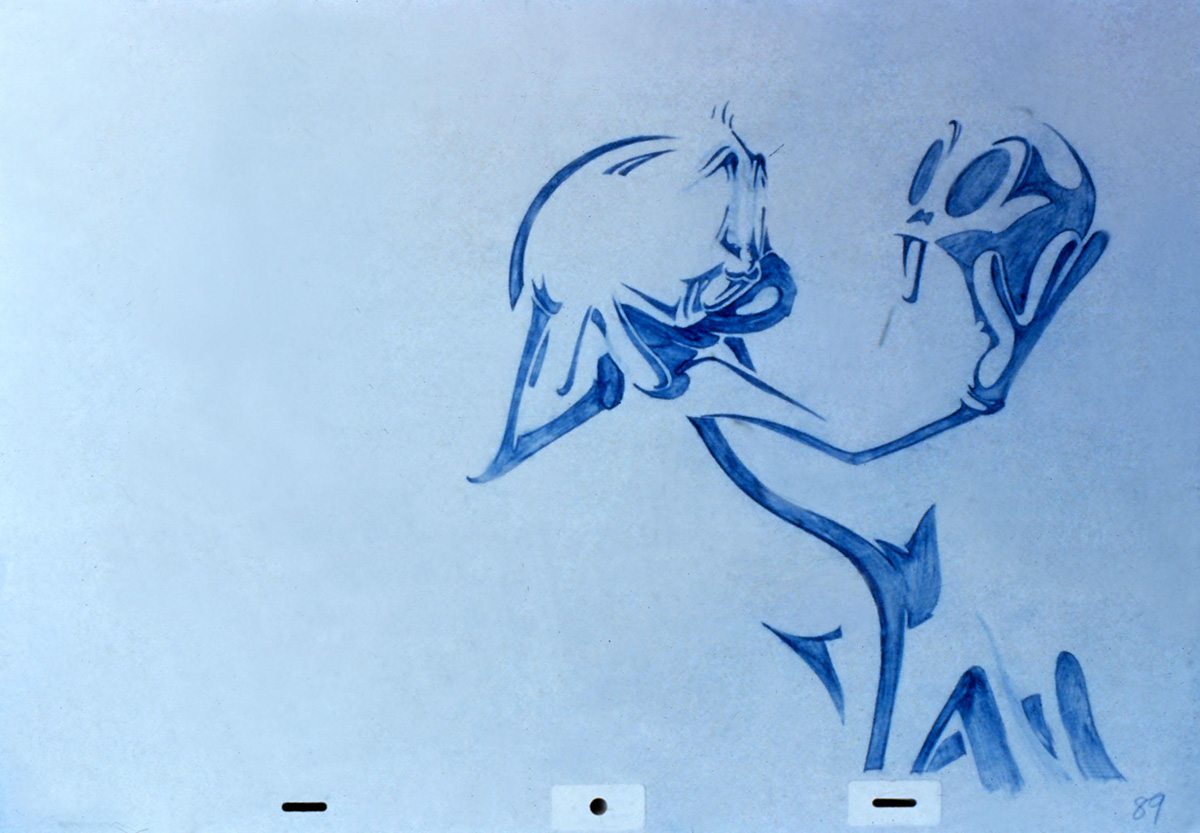
Bill Perkins (animation art director): The other thing was, we only had around eight months to do about 52 minutes of animation. I’d never worked on a project that was of that scope and had to be turned over that fast. And when I went over there to Sherman Oaks where Warner Bros. was, it was just kind of a little skeleton crew and nothing had been approved.
Neil Boyle: The other thing you have to remember is that we were not using email. So if we had a question about a drawing, we either had to put the drawing in a box and FedEx it overnight, and then the animation directors would make their corrections or their notes and they’d FedEx it back, or we’d have to photocopy the drawing down to make it small, put it in a fax, and then fax it over to them and then get their notes back a few hours later. So it was kind of crazy. A year later everything would have been email, but this was just before it came in.
Allison Abbate (animation co-producer): I came on in February of 1996 and was brought on by animation producer Ron Tippe. It seemed like an impossible task—we had 10 months to do all the animation and deal with a regime change. After live-action was shot, there was a transition from Joe Pytka to Ivan Reitman. It felt like a Mission: Impossible episode! Ron was such an inspiring colleague, so I jumped into it. It was all crunch.
Tony Cervone: Having Ivan around was pretty helpful—he was at the height of his powers then. Between Ivan and Pytka and Michael Jordan, you can’t really argue with any of those guys. We had three 800 pound gorillas to choose from at any time. They protected us all the time.
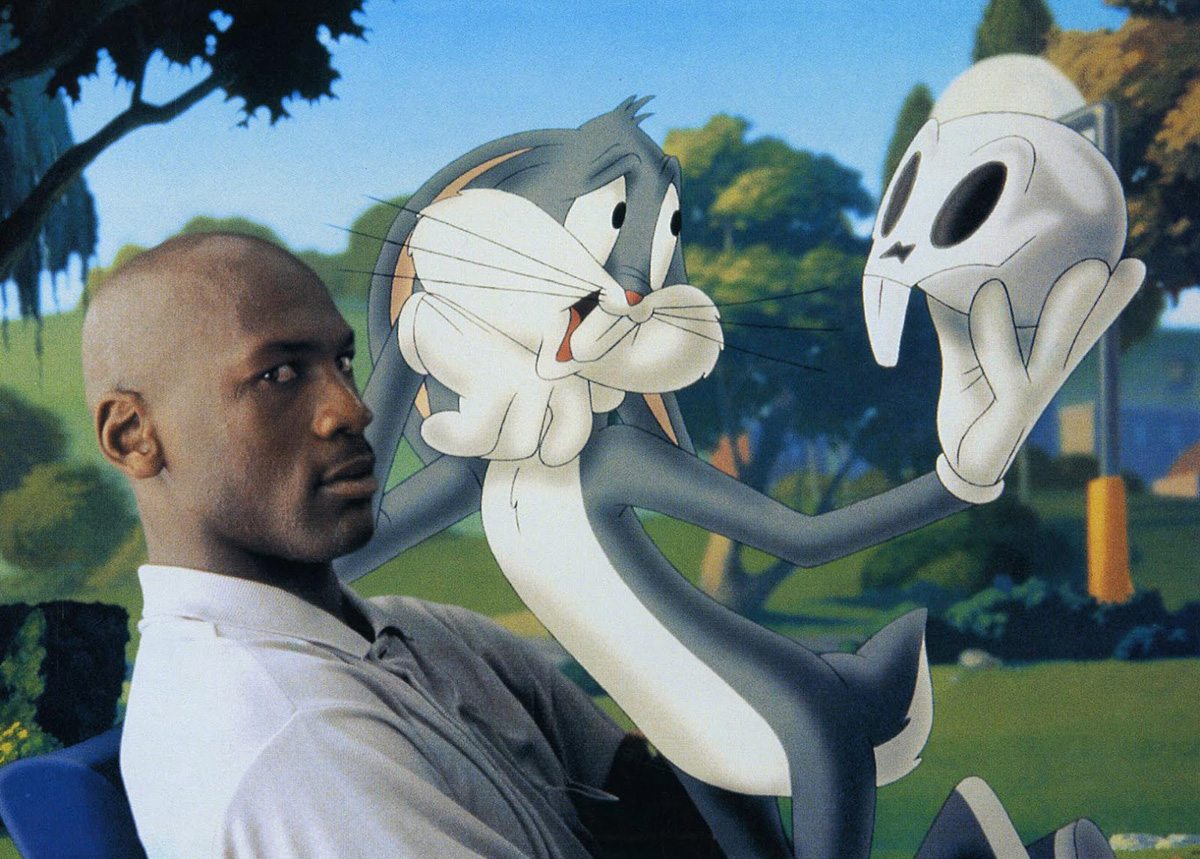
Getting into character
Bruce W. Smith: It was all pretty hectic, but we knew what we wanted. There was Roger Rabbit as a template and Joe Pytka had already directed the Michael Jordan commercials. We weren’t necessarily worried about the characters themselves, but there was a lot of technical stuff that we wanted to do to really make those characters breathe in their fullest form on film.
Neil Boyle: It was such a whirlwind that for a while they were still talking about Swackhammer (Danny DeVito) potentially being a live-action villain, not an animated villain. And Pytka was very friendly with Dennis Hopper and for quite a while we thought Dennis Hopper was going to be Swackhammer. And then they went, ‘No, no, it should be an animated character like the rest,’ and so he was designed as an animated character.
Bruce W. Smith: We knew who the characters were going to be in the movie, but as characters they had evolved over time in the Looney Tunes world. Bugs and Daffy were very domesticated by then, for example. They were much less about just the general broad, wild principles of animation and more in the realm of the conservative nature of television. So what Tony and I wanted to do was really go back to those early zany models that Chuck Jones had brought in and that had been nurtured by [directors and] animators like Tex Avery and Rod Scribner.
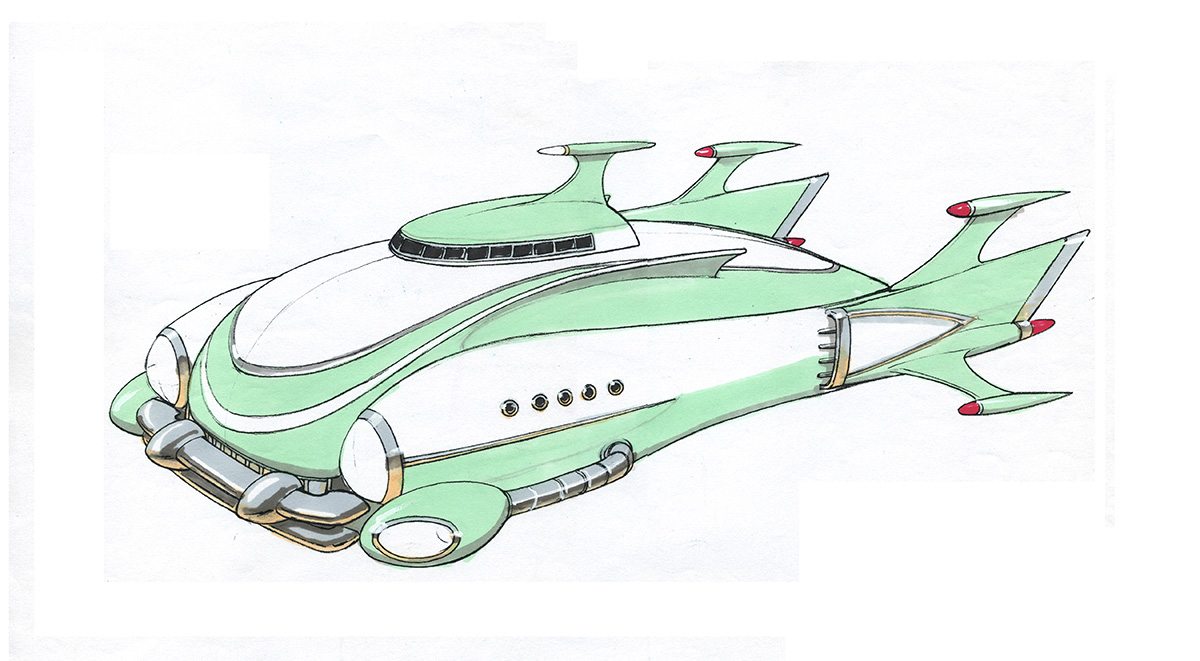
Neil Boyle: They bought us boxes of laserdiscs and we had every Warner Bros. cartoon that you could dream of that we could watch and reference and print out and take stills from. So it was just a matter of drawing all day in the port-a-cabin and then going home at night and watching Warner Bros. cartoons. I was living in a Warner Bros. world day and night for several months.
Tony Cervone: The Monstars were interesting characters. There was a lot of struggle about what they should look like and in the beginning they were a little soft, a bit too cartoony and cute, as if they had walked out of a Disney movie. There’s one drawing I did and the shot is in the movie—it’s the shot where they’re all looking down at Bugs and the moon is behind them. But it was a really crude drawing. Ashanti Miller colored it—and that was it! It was like they came out of Marvel comics, not a normal animated movie.
Bruce Woodside: The challenge was to come up with content that had an edgier Warners sensibility, whatever that might be, to distinguish us from and actively competing with Disney Feature for a slice of the animation pie—or more specifically, as I recall from a speech given to us by one of Warners’ CEOs, to ‘fill the shelves’ of Warners company stores with tie-in merchandise. Oh, and make a good movie as well.
Tall Green Men: Shooting Space Jam
Ed Jones: Joe Pytka wanted it to be a sports film and so they wanted the camera to move without any limitations. And then at one point Michael Jordan had asked me, ‘What do you want me to do?’ and I said, ‘Well, can you do this move that you did against the Lakers?’ And he said, ‘I only do it once.’ But I knew what to do—we had to build what would now be known as a virtual set.
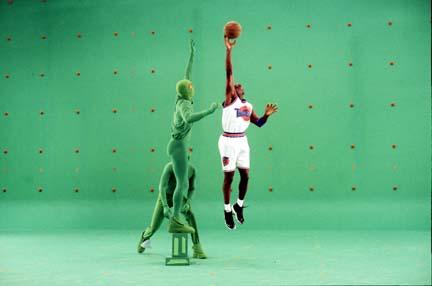
What we built was a 360 degree greenscreen set that was wrapped in motion tracking markers, and it was one of the first of its kind. We had proprietary tracking software, and I brought in speakers and music, and we just let Michael play against a total greenscreen, including the floor, with just a rim and the backboard, and do whatever he wanted. And then we replaced all that green with environments, whether it was environments inside of the practice gym or the big gym, which was modeled after Madison Square Garden.
Bruce W. Smith: Joe had a great style to his commercials and he wanted to bring that style, that cinematic style, to animation which hadn’t really been done before. So we would do lots of proof of concepts on the set, where we would be drawing right there on the set to help Joe with staging of the characters that weren’t there on the greenscreen.
Tony Cervone: The idea of these 2D characters playing basketball—we didn’t even realize what it meant for them to all be sharing a basketball. Most of the time it’s a combination of a real ball and a 3D ball. We would make these discoveries in production as they were happening. For example, the idea of making a cg basketball net was impossibly hard! But we didn’t know that until we had to make a net. So then we tried to splice in live-action nets into the 3D stuff. If you go back to look at that stuff it kind of looks terrible, but we didn’t know how to do it.

Neil Boyle: I was there for most of the live-action shoot just to help on stage with any questions they might have about the animation. What was crazy about the speed of the production was, within a few weeks of sketching out how some of the live action might work, I’d be on this sound stage and they’d already built what we’d sketched!
Ed Jones: We wanted Michael to play against real players who would then be replaced by the Looney Tunes characters. The solution was what we called the Green Team. We had players who were NBA players—they just weren’t star NBA players. And then we also had actors, improv actors, who we hired to be in green to replicate the eye lines for characters like Bugs or whoever it might be in the actual scene. It allowed us to have them press against Michael and Michael press against them. Whenever Michael was playing it was physical and he was dribbling a real ball. Whenever the ball was not in Michael’s hands, it was a synthetic cg ball.
Neil Boyle: Joe Pytka was, I think, quite a tough guy for some people to work with on set. I mean he could be quite tough, but I got on with him really well and he seemed to like me and I had a nice time with him. I admired him, you know, but his commercials were shot in a very wild way. He’d do a lot of different angles, he’d dutch the camera a lot—you could tell a Pytka commercial. He had a visual trademark, if you like. And that was something we were quite excited about in the early weeks of production, but it didn’t really translate into the feature film. I wondered whether there was some kind of difference of opinion maybe between how Ivan Reitman would make a film and how Pytka made a film, and in the end it got slightly watered down. So it wasn’t quite as dynamic as I thought it could be originally.
Bruce Woodside: Questions arose at the point where we were laying out scenes and trying to figure out how the elements would be composited. But, as I was soon made aware, Cinesite and the visual effects team had already developed a set of techniques, or would continue to improvise as they went along, that would become the beginnings of the cgi standards of motion tracking that now seem so commonplace we don’t even remark on them unless they go seriously awry. At the time, however, it was mind-blowing and exciting innovation.
Neil Boyle: Every day the script was being re-written before the shoot and it was being re-written during the shoot. They have this system where if they do a re-write of a certain number of pages they put them on different color paper, and then those sheets are delivered to you. For example, maybe page 98 and page 99 have been re-written and they’re on yellow paper. And yellow paper means it’s the ninth draft, and then when the tenth draft comes in it’s on salmon colored paper. You end up with this beautiful rainbow-colored screenplay in your hand.
In Part 2, more on the animation and vfx techniques used in “Space Jam.”
Read PART II and PART III.
